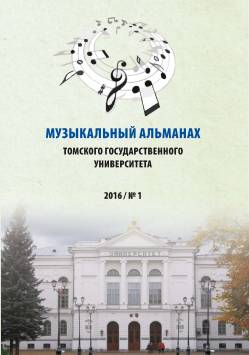Japanese traditional orchestra music: correlation between time and timbra
Traditional concepts of time and timbre in Japanese music are interrelated. The concept of time emphasizes the present and, as such, demonstrates a strong influence of the timbre. The author demonstrates that the definitions of time and timbres are parallel to each other in the appropriate dichotomy of static and dynamic fundamentals. Analysis of Etenraku, the most famous of the works of Kangen, showed that on a large scale Gagaku's musical material is relatively static, which increases the degree of predictability and creates a sense of meditativeness. As the feeling of moving forward diminishes, listeners focus their attention on the present moment. The analysis also revealed the dynamism, heterogeneity and multidimensionality of the material. The timbre plays a decisive role in this musical experience, as the most important material in the work - the melody through its heterophonic circulation becomes the timbral component, which affects the acoustic properties of the instruments that do not mix during spectral analysis, which makes it possible to understand the transformation of the melodic line. Future psychoacoustic studies may confirm the link between meditativeness and the emphasis on timbre. If someone is interested in the perception of sluggishness in several significant genres of Japanese traditional music, then he will be interested in information about two outstanding figures: composer Thor Takemitsu [5] and musicologist Yoshihiko Tokumaru [7], who pointed to timbre as a vital element of Japanese music. In accordance with Takemitsu, the author concludes with the words: "... The Japanese are people who have been endowed with a strong susceptibility to timbre since ancient times."
Keywords
японская музыка, оркестр, время, тембр, Japanese music, orchestra, time, timbreAuthors
| Name | Organization | |
| Lipayeva Darya E. | Kuban State Agrarian University | prihkatja@mail.ru |
References

Japanese traditional orchestra music: correlation between time and timbra | Musical Almanac of Tomsk State University. 2018. № 6. DOI: 10.17223/26188929/6/12